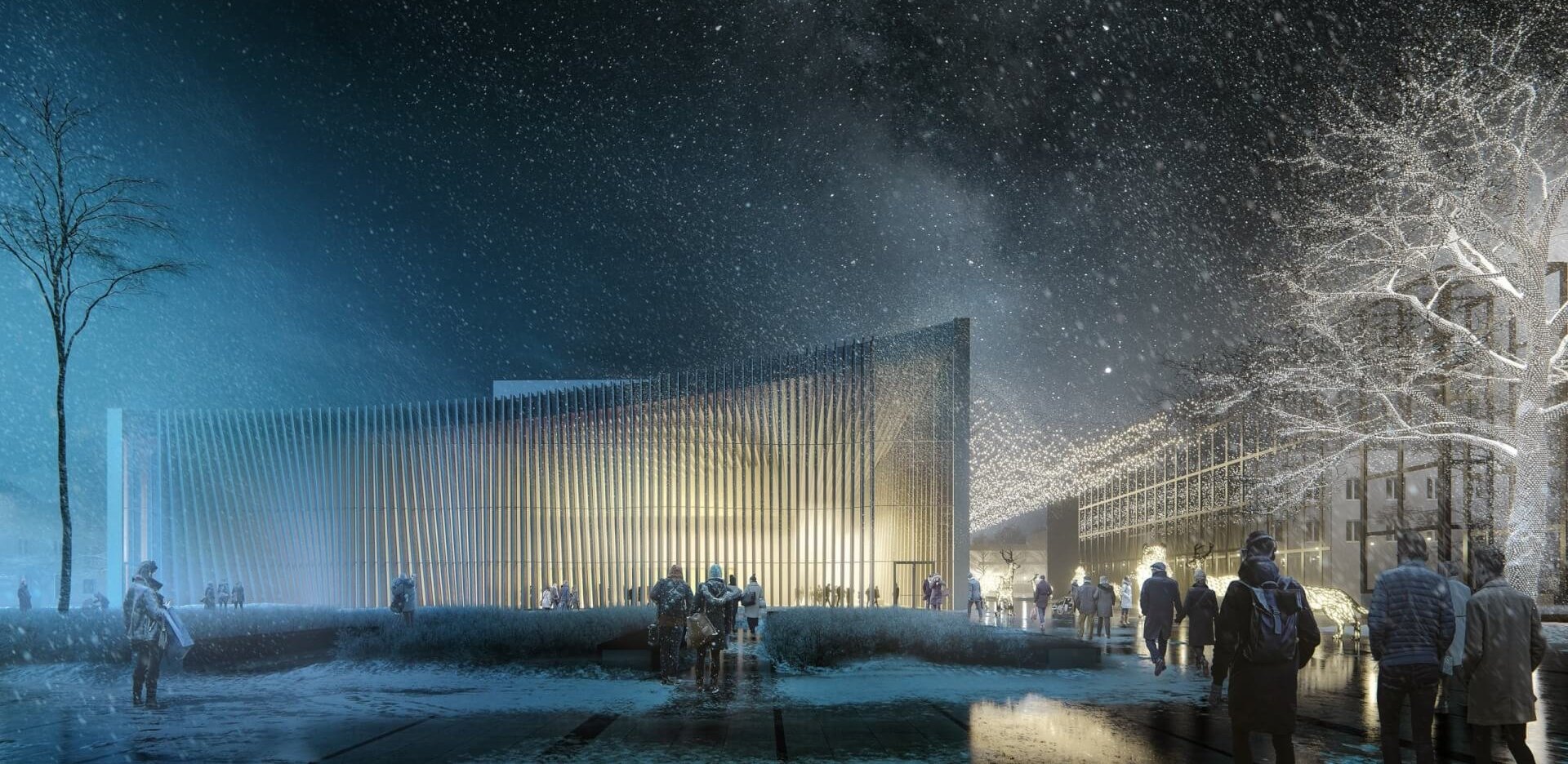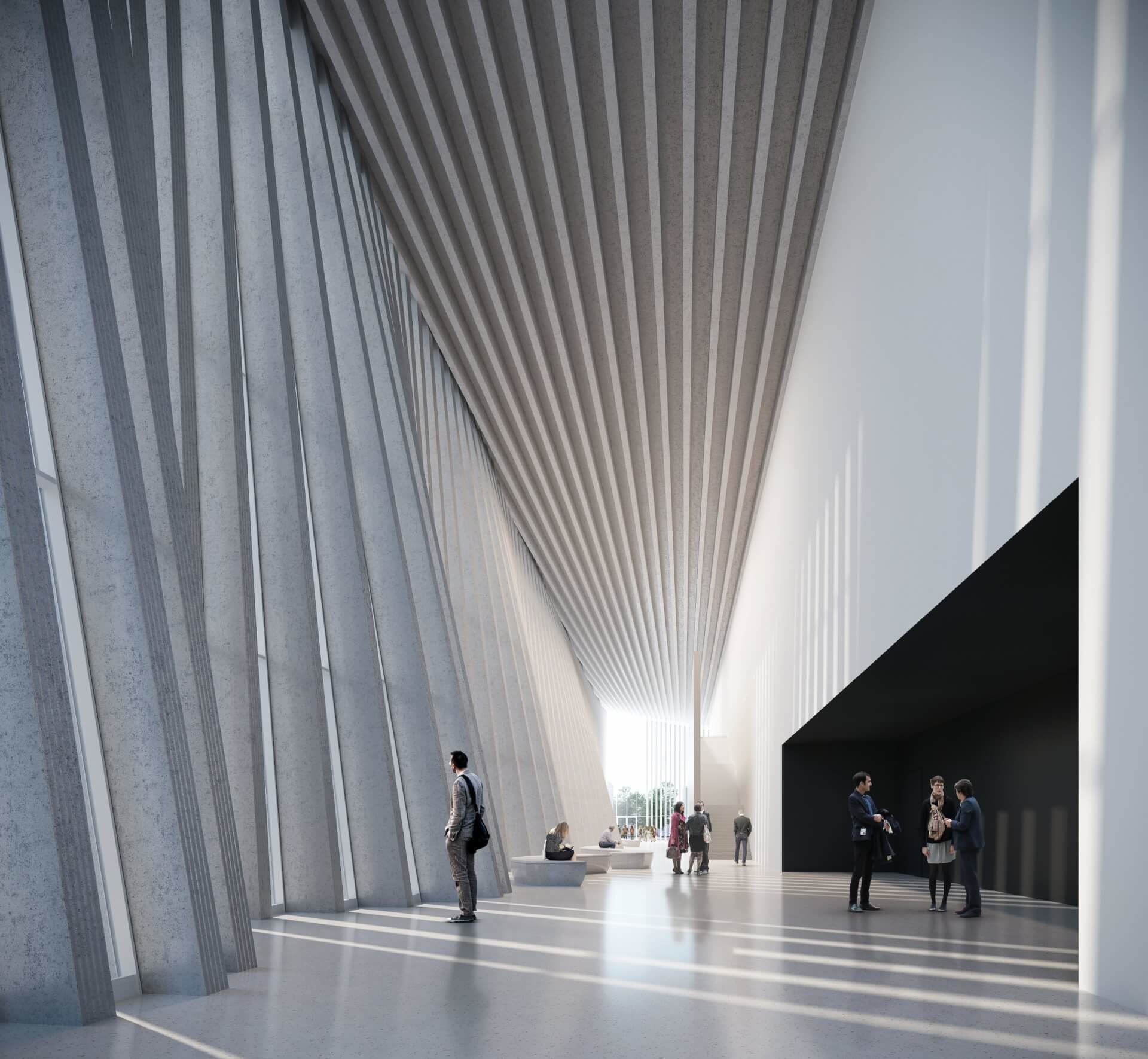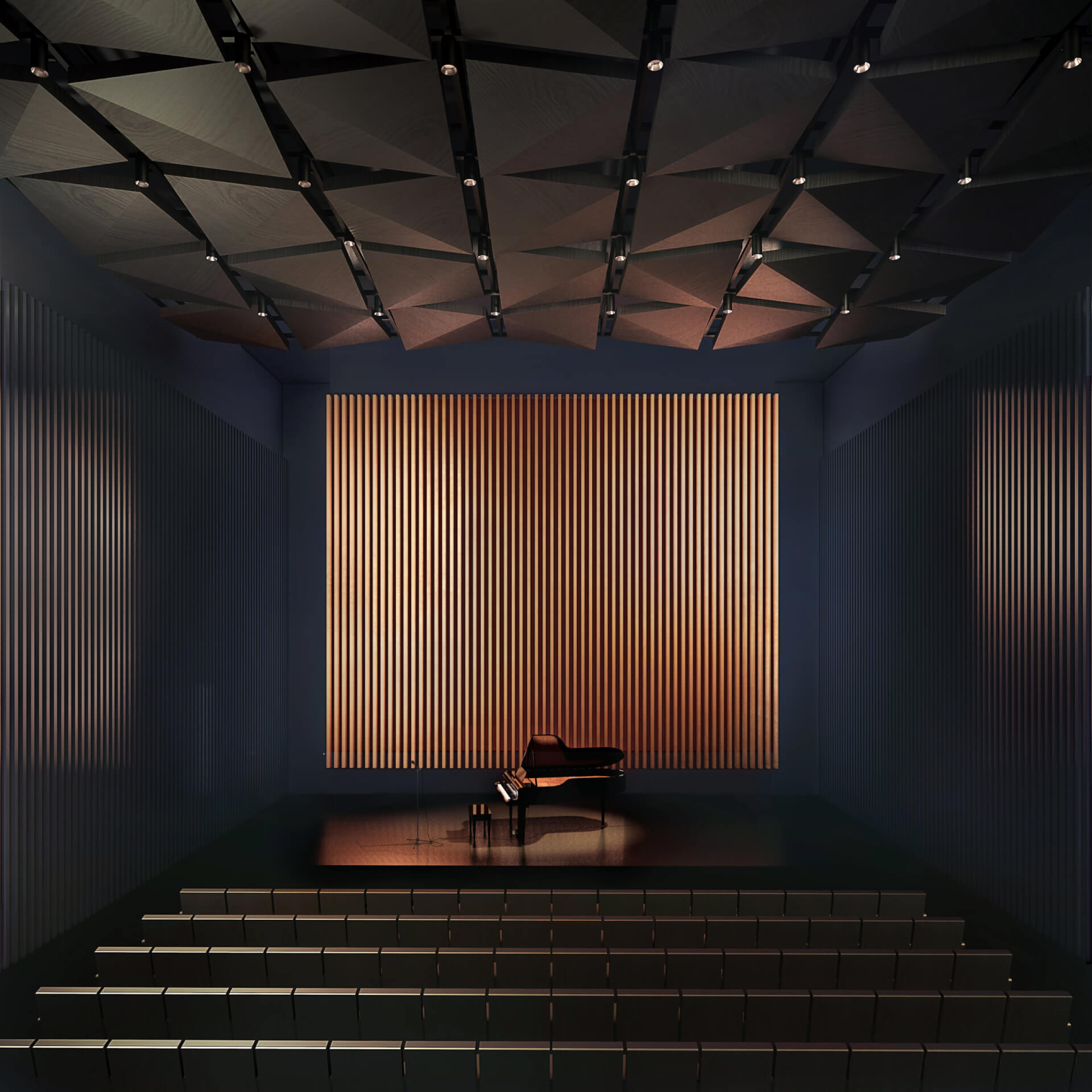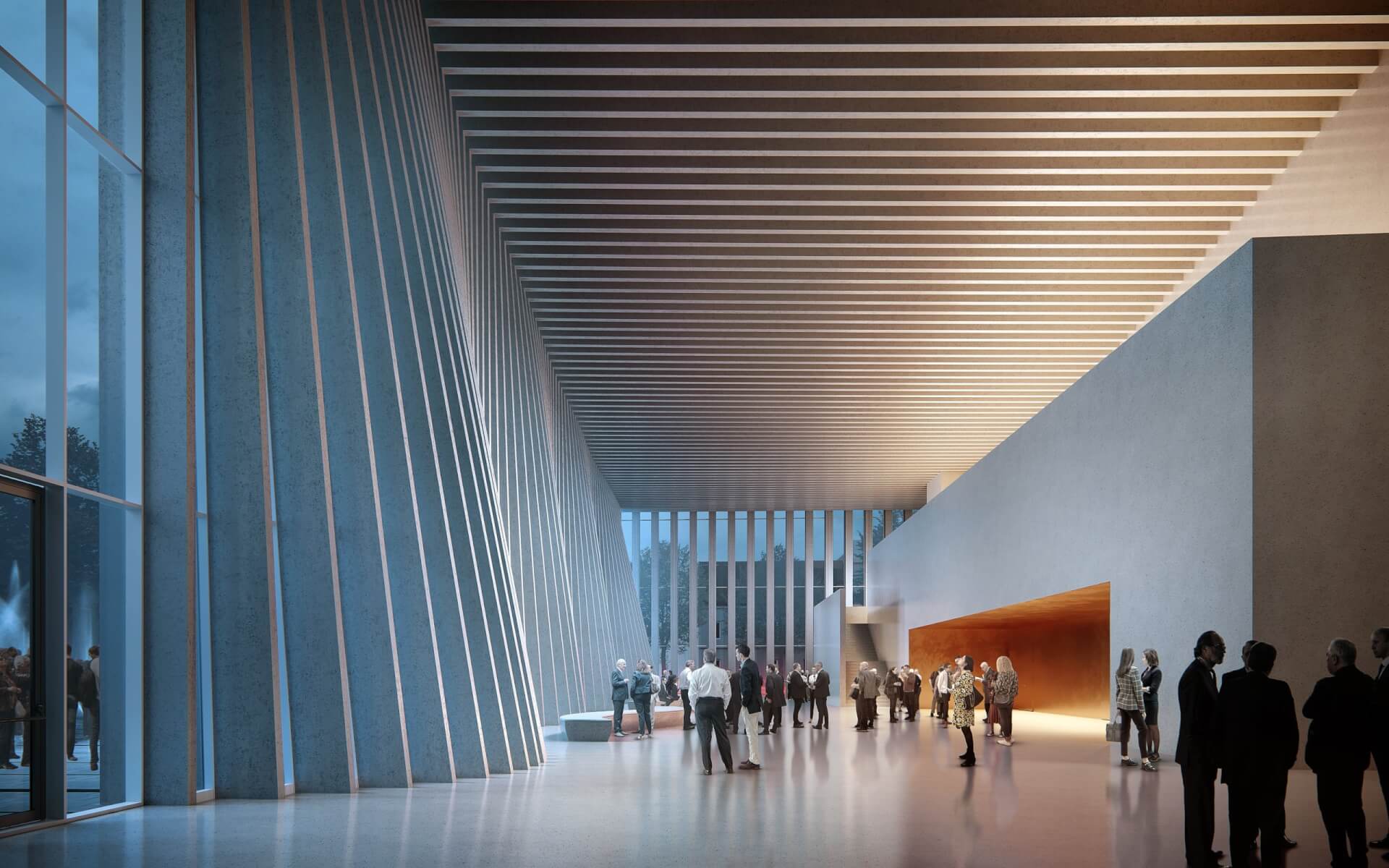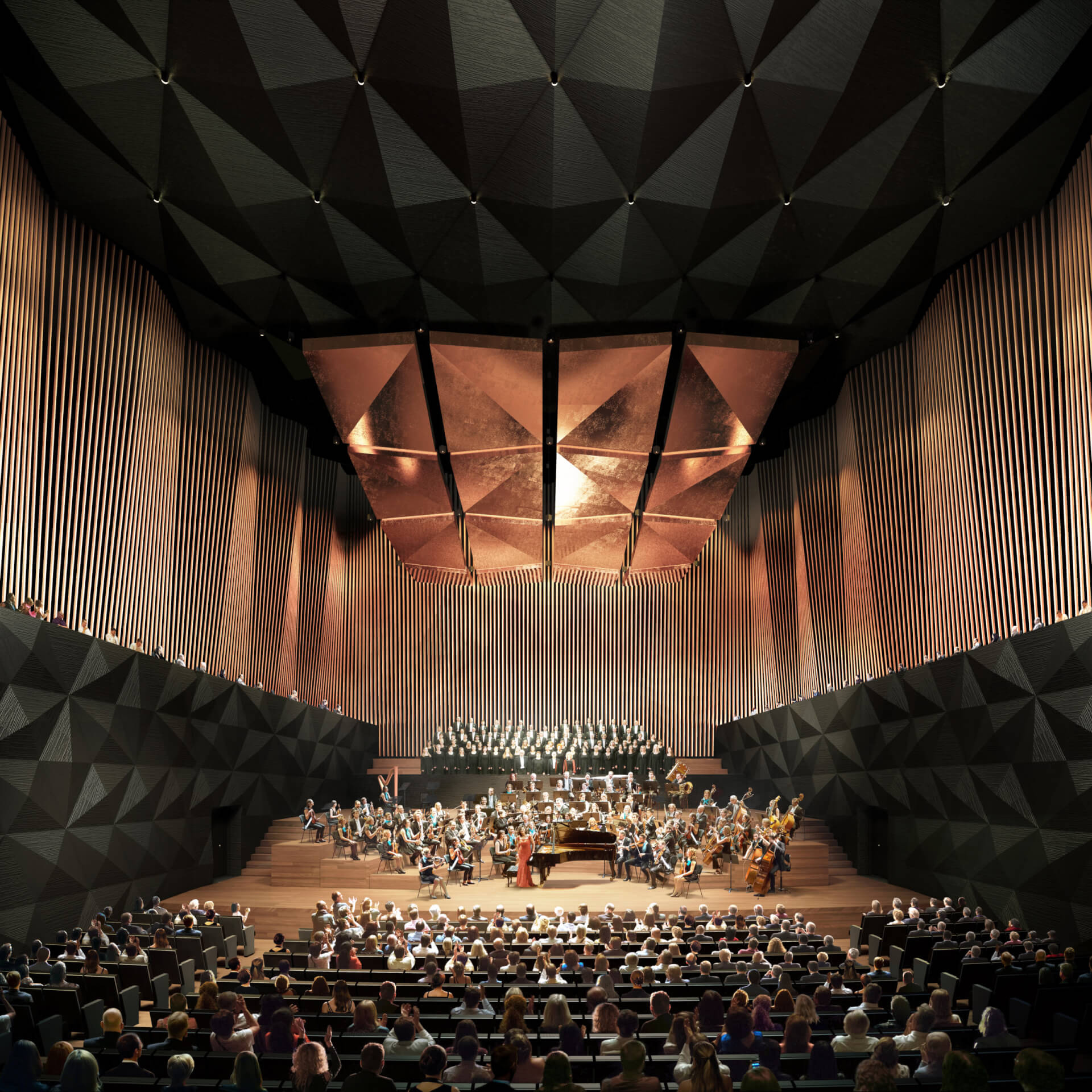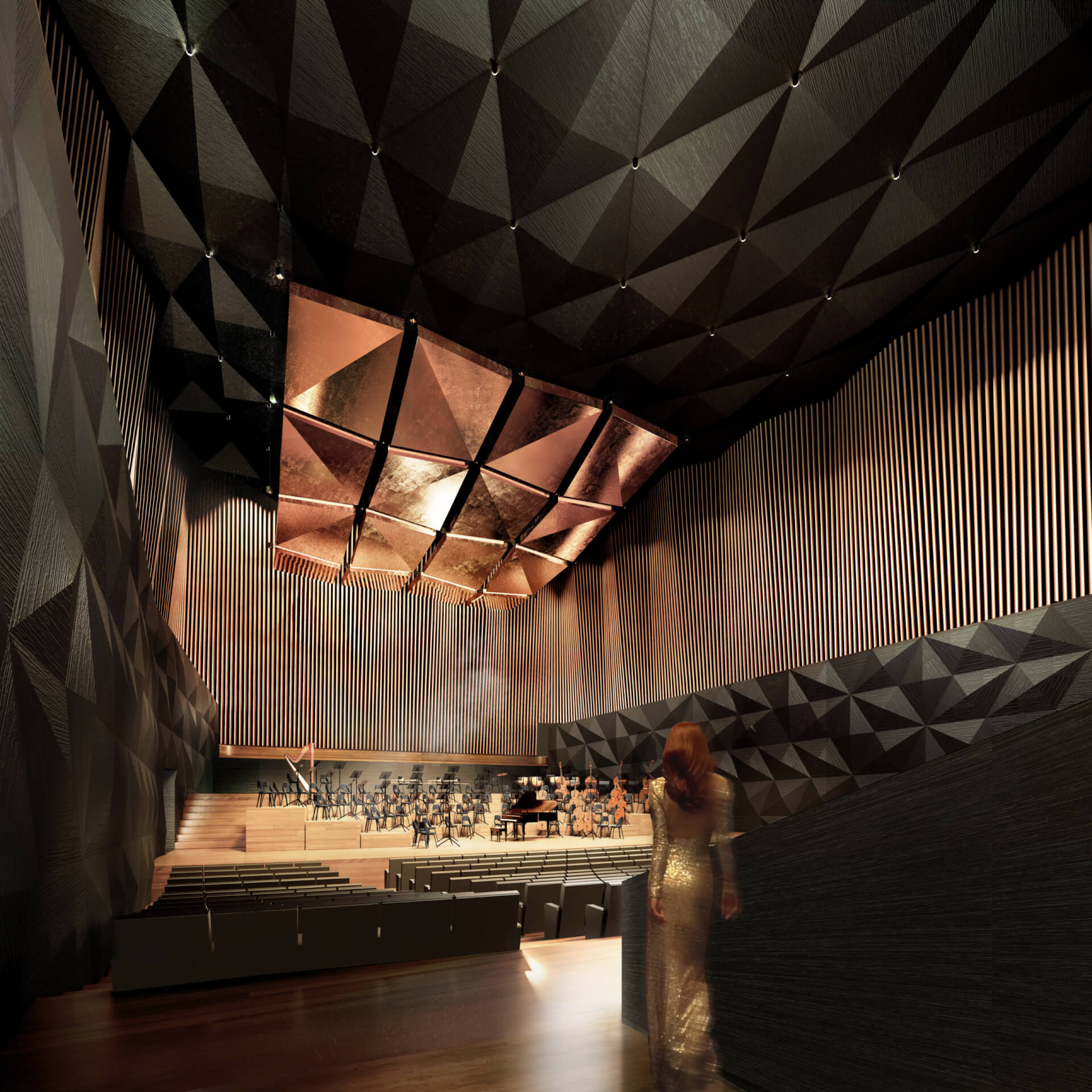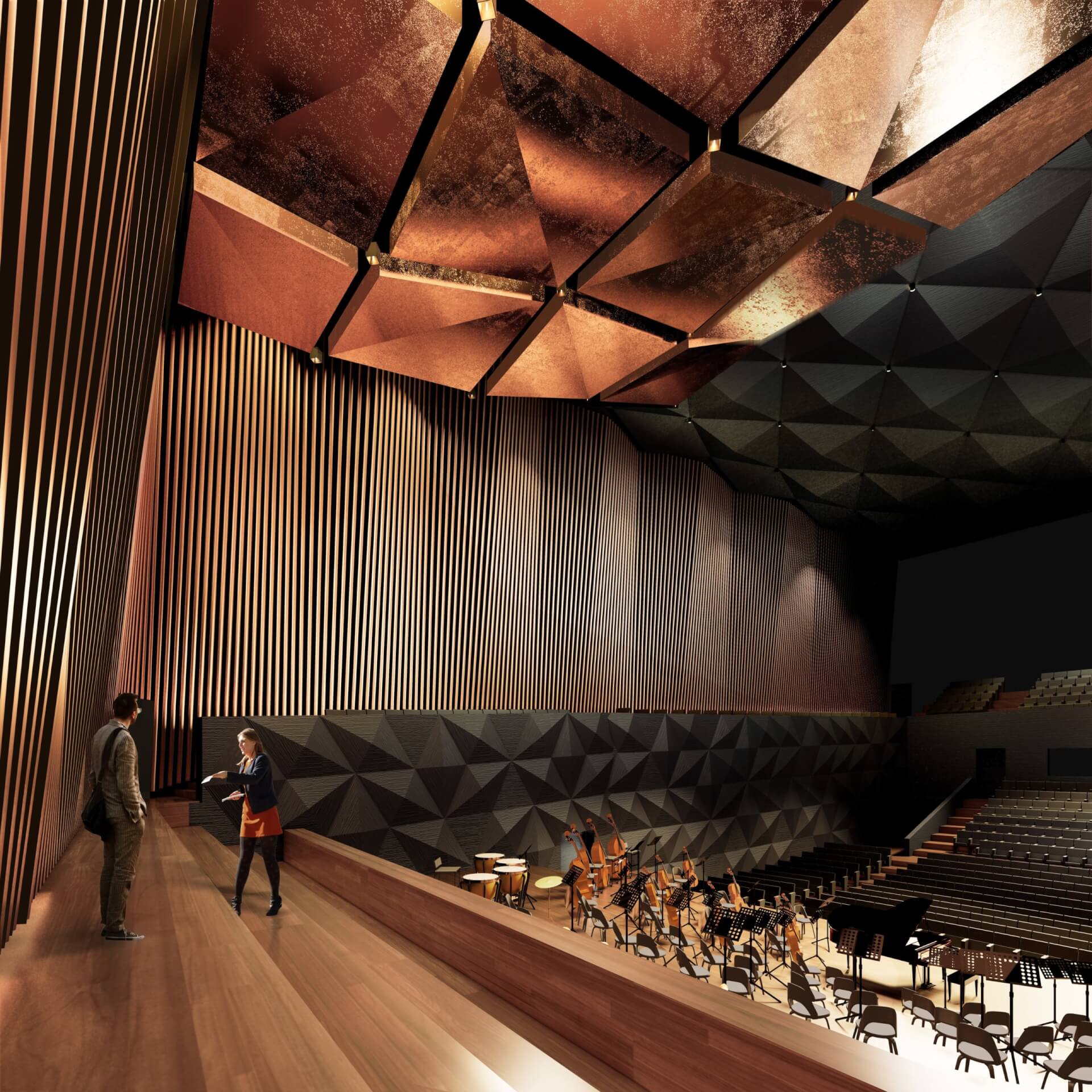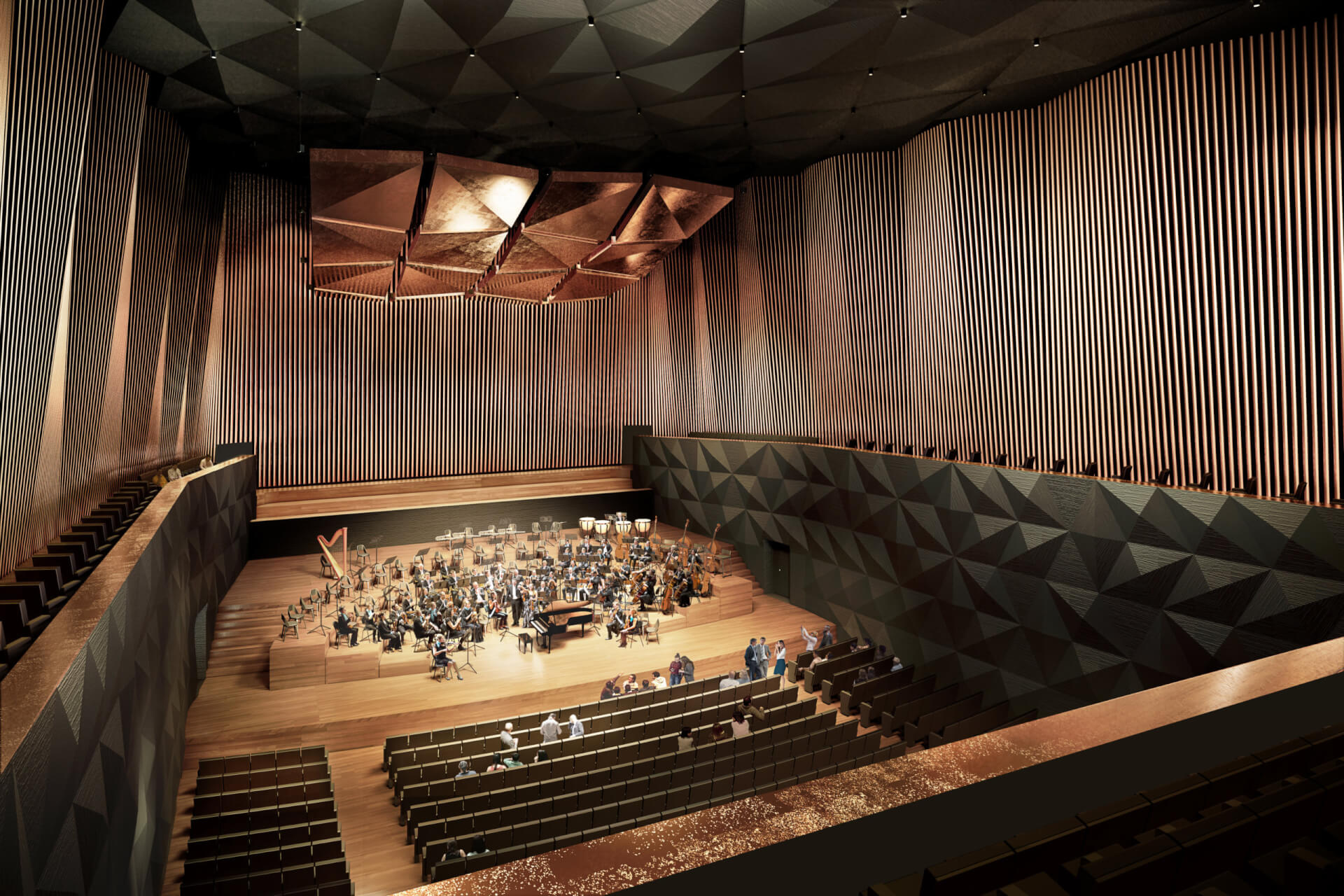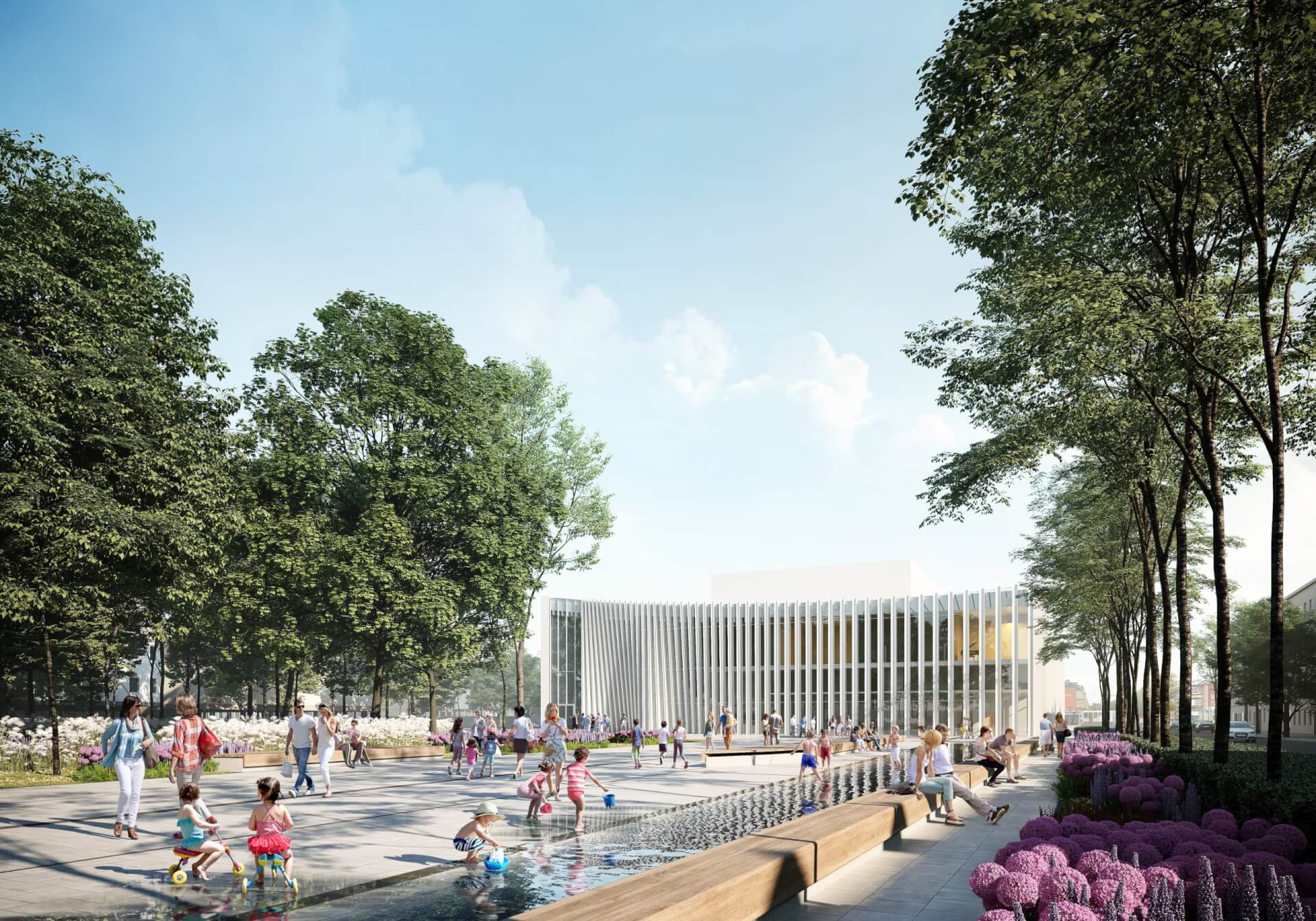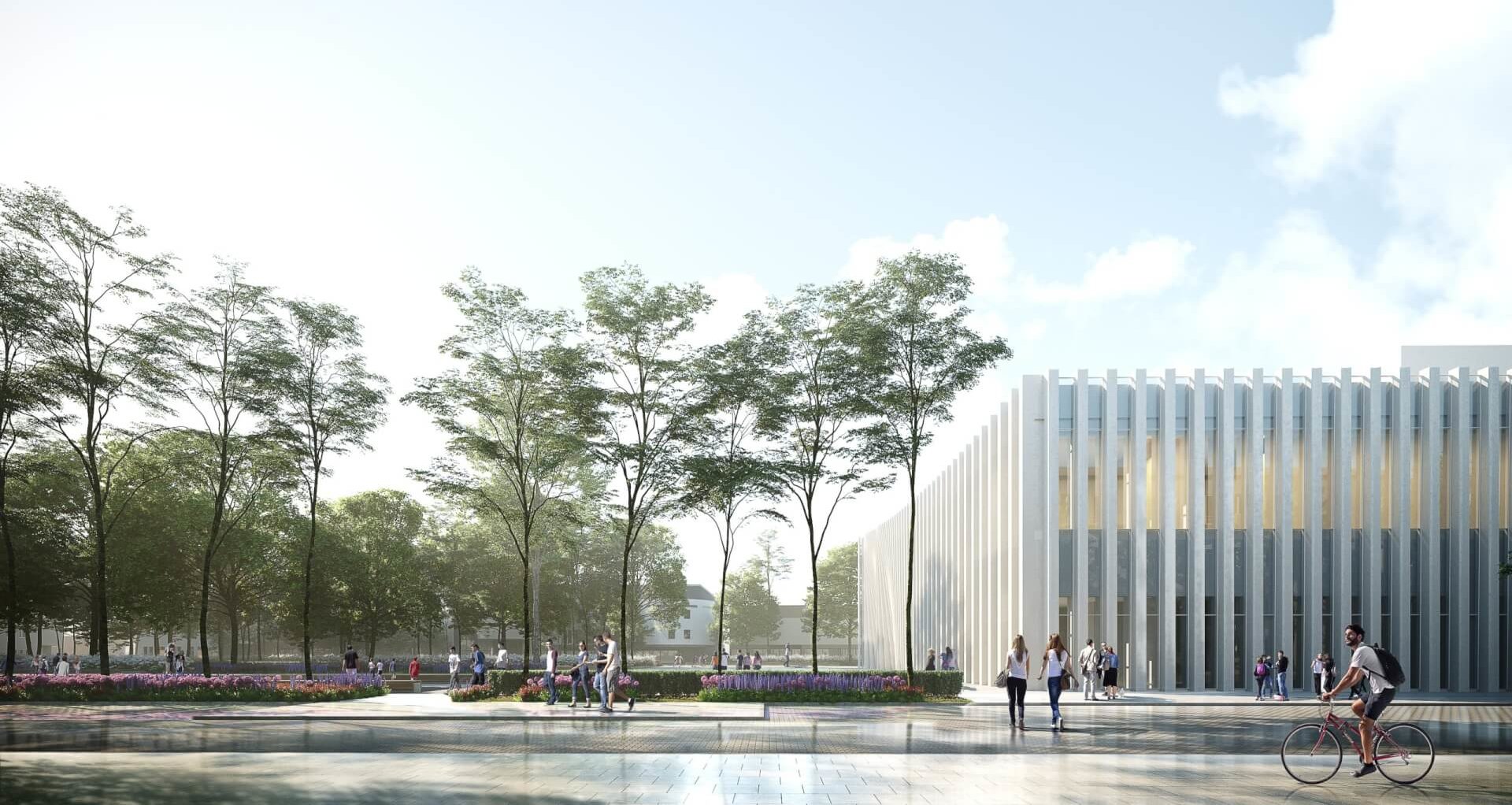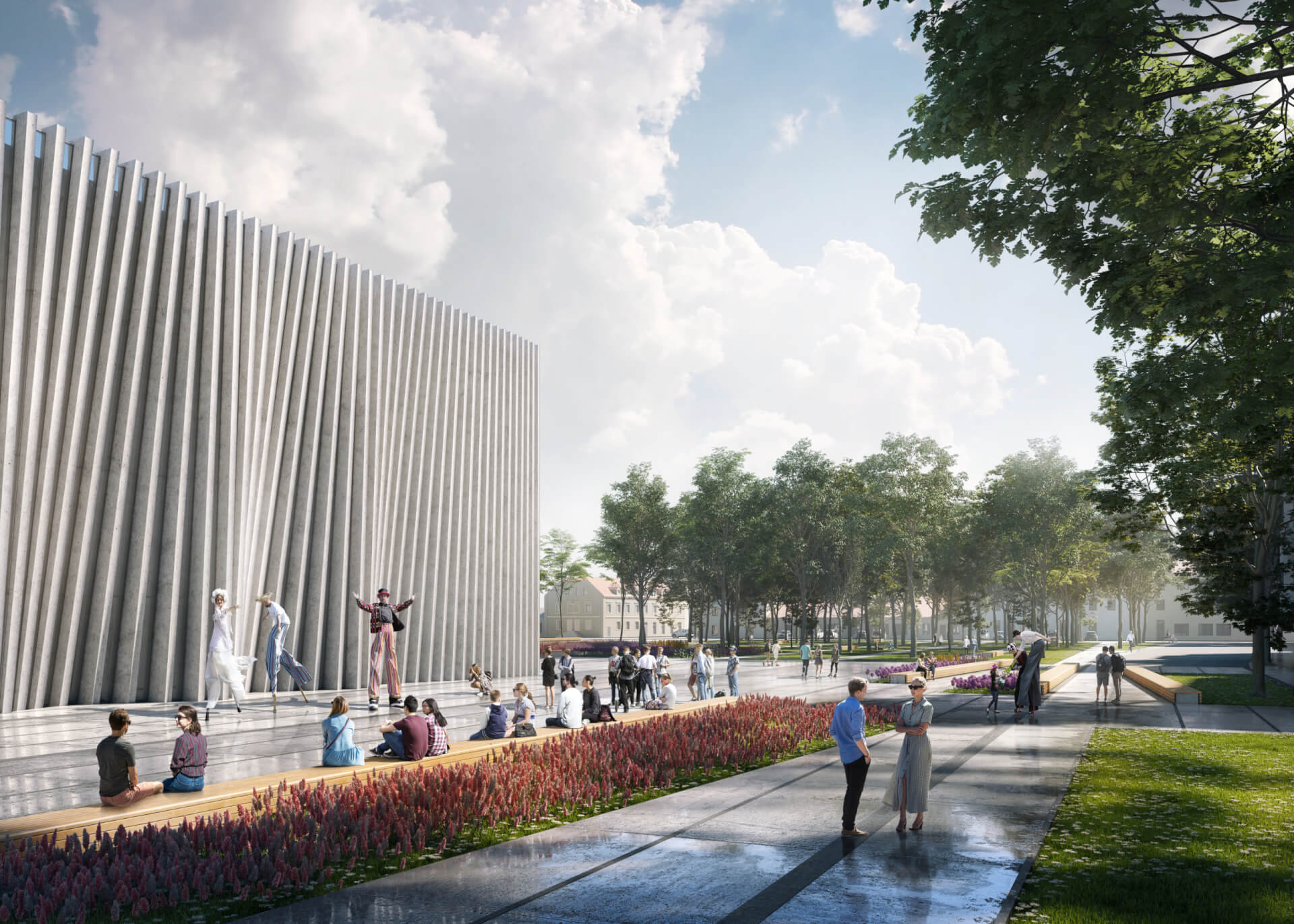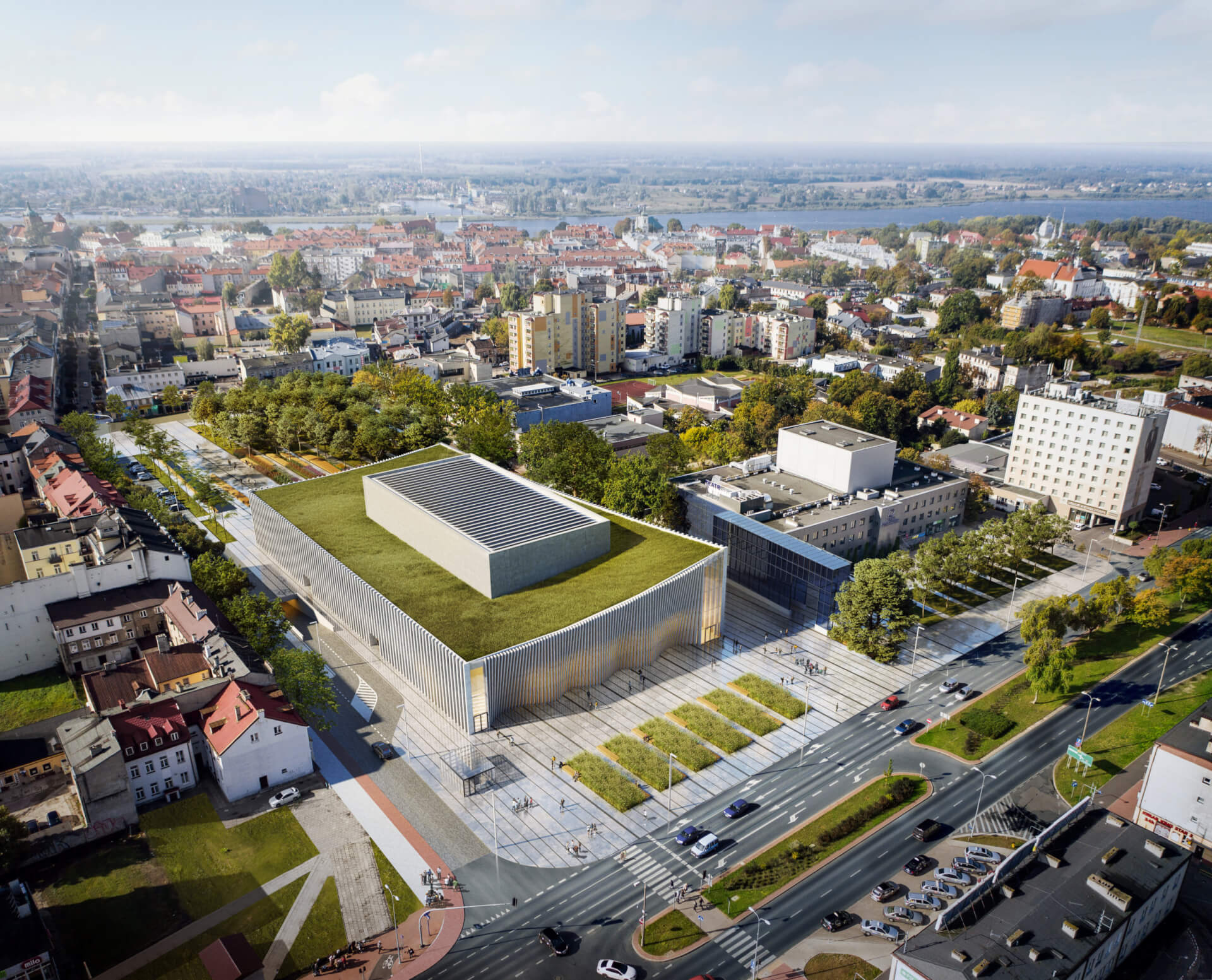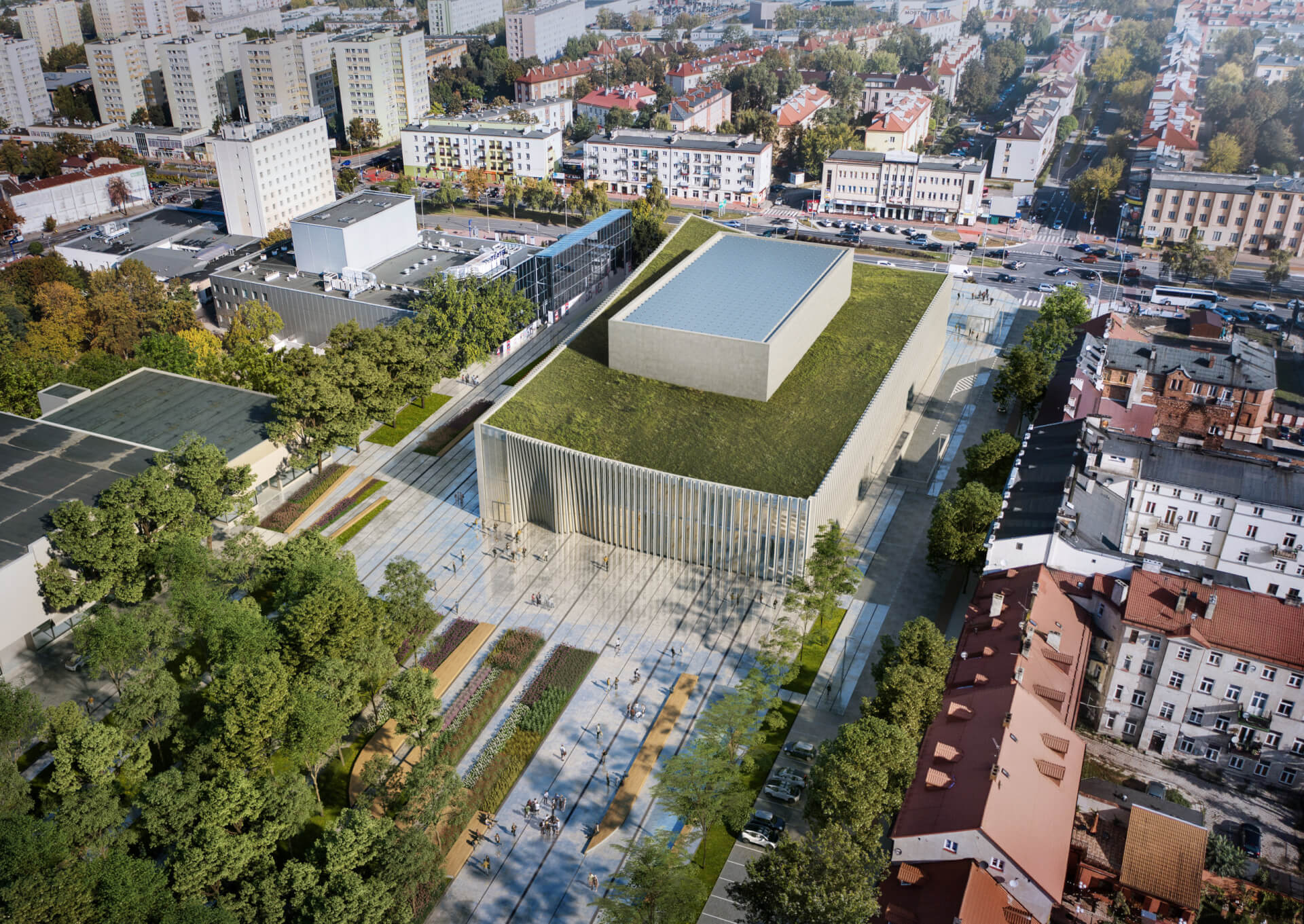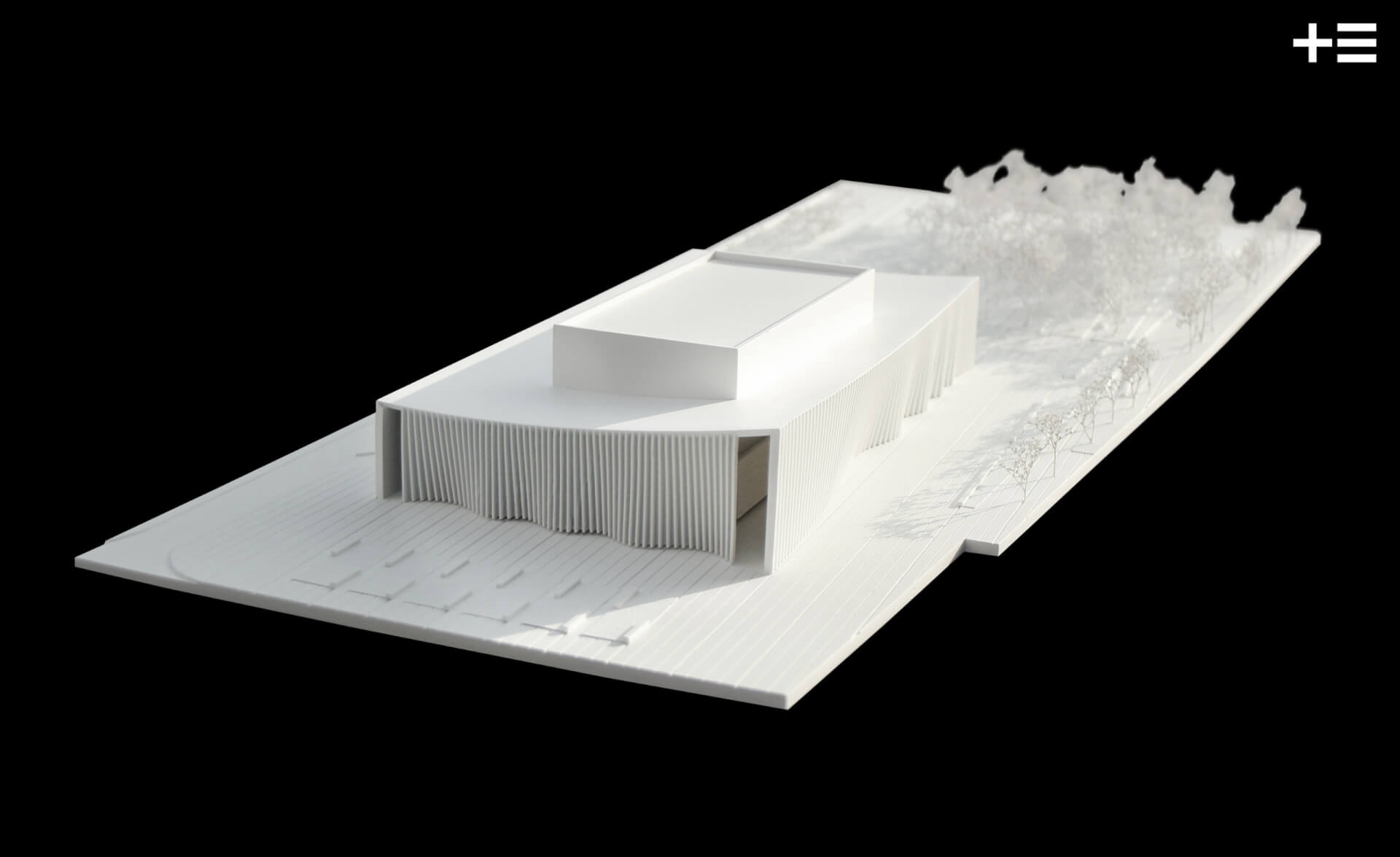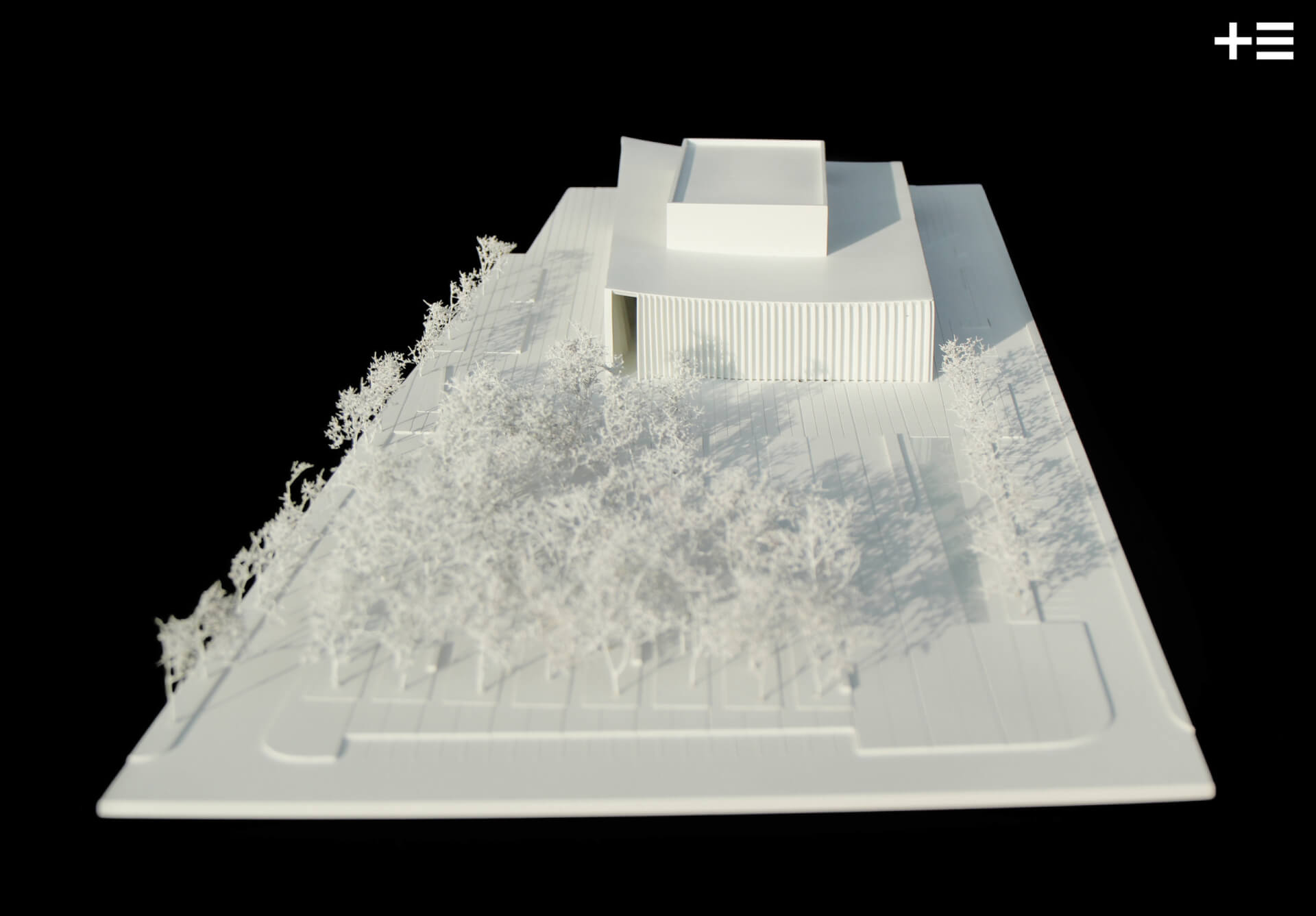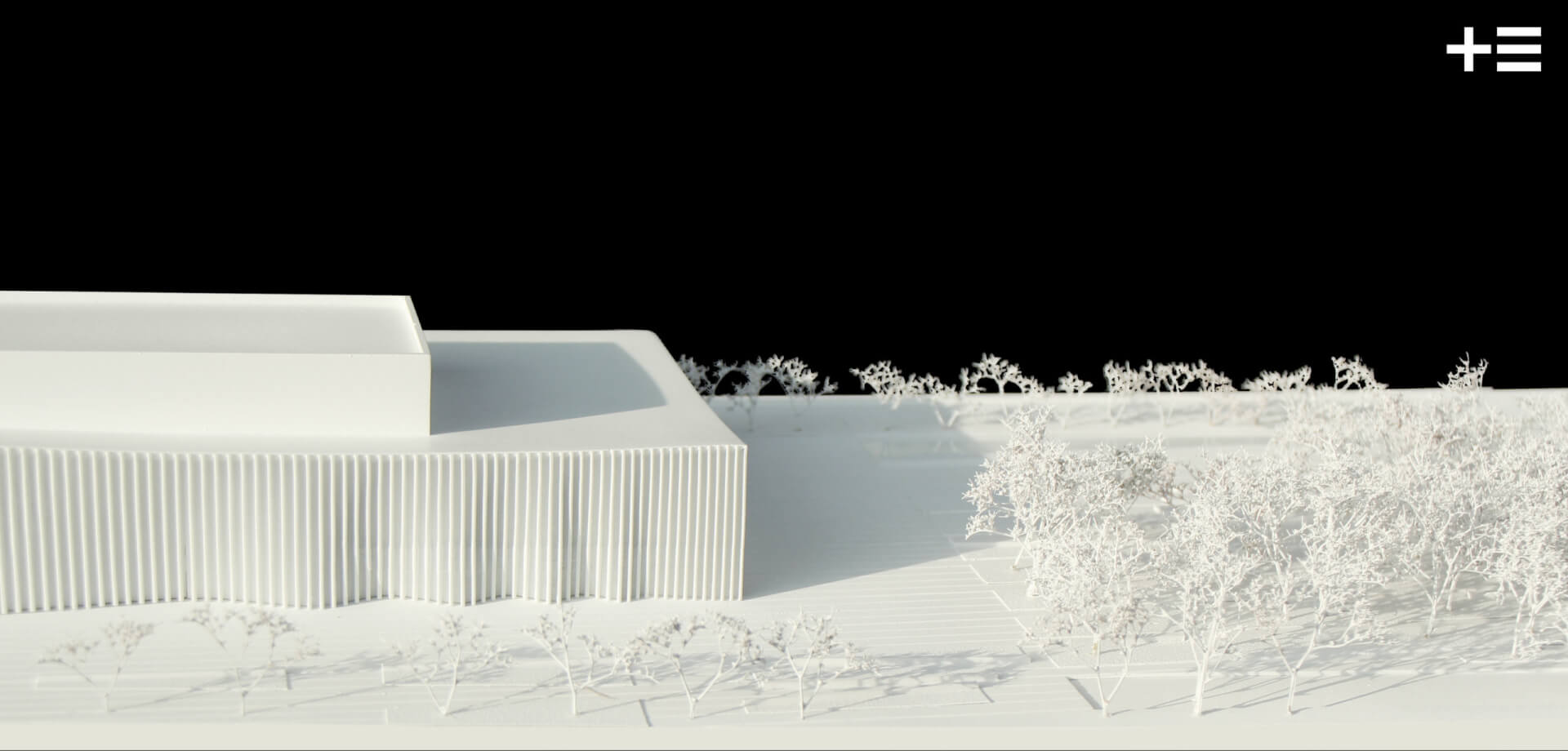philharmonic hall
„In all of the universe, nothing is so mutable as a city, a variable as such cannot be contained.”
Tadeusz Peiper, Notes on the principles of poetry: Pisma, t. 2, 1974.
.
Change is strength. Change is a revelation. Change is the meaning and the objective. As much as we delight in charming Old Towns, most serve as contemporary urban heritage parks, a tourist attraction on the “must see” map. They become images or moments captured in perfect snapshots to be endlessly retouched and saved. Nevertheless, such reasoning is nowhere close to true essence of a city. It strives to live, form new spaces and endlessly evolve. Płock, in this case, isn’t any different.
Urban Creation. A quest of an impulse, a lure for all new events, facilities, residents and visitors. This intended building of the modern concert hall near the New Town Square can and should transform into a hub for change and dynamic growth of this part of town. As it sits on the axis of Tumska street, it is thereby connected to other key areas of town such as the Vistula River and its banks, Tumski Hill and Old Town Square. At one time, New Town Square pulsated with life and energy. The “horseshoe” building was the center of everyday activities, it also served as a marketplace near the railway station. Though clearly these weren’t functions of high culture, nevertheless trade and public transportation were an integral component of urban development. Undeniably, even as late as the nineteen fifties the New Town Square was alive, bursting with vigor, its rumble bouncing off the facades of townhouses and homes. Eventually, even this place lost its bustling charm, that of a melting pot of travelers and traders; gone was its life force, it’s vital spark. The days of rackety tradeswomen, petty vendors and city slickers were gone and forgotten. The “horseshoe” was replaced by the “anti-horseshoe”, dividing the square into two distinct parts – nondescript greenery and a parking lot. The place has lost its essence, its character, as it remains unkempt, lacking uniqueness; its status, that of a vital town square, gone. The new concert hall will commence change. A venue which along with the Dramatic Theater will usher a new beginning for the local cultural quarter, municipal happenings, community initiatives and related pursuits. All that is needed is a proper foundation.
The new town gateway. The concert building retracts from the facade of Jachowicz alley, thereby retaining a measured distance from the busy street and imparts the space with a foreground of a major public construction. In essence, it’s a town square with limitless access due its proximity to multiple bus stops and an intercity bus depot. Beyond its obvious functional component, it is also a site that heralds an exceptional capacity – a life infused cultural district. Just across from the Dramatic Theatre, the new Płock orchestra building complements the space to establish a landmark on the city map. It’s a symbolic gateway commencing a stroll across the New Town Square, Tumska street, up through Tumski Hill and along the Vistula promenade. The building exterior plays on the feelings of pedestrians like a charming, mysterious harpist. Its facade subtly elevated towards the theater, its gossamer construction outstretched between the entrances on each side – a quintessential gateway into the city. An entrance pulsating with a luminous, majestic interior concert hall lobby, its musical ambiance and warmth. Indeed, even on cold winter nights, music oozes from between the vertical, even crevices. A vision of picturesque, white winter…
A park of shadow and light. Between two culture beacons, a central new landmark takes shape. Drawing both passersby from the bus station and those from the park, it’s a pedestrian junction. Above all, it’s a site of joint pursuits between two cultural institutions – a superb location for summer art exhibits, happenings or street theater parades. The modern facade of the new Płock Symphonic Orchestra site opens onto the town’s cultural square with a delicate wave of light shutters and mirrored glass – a flickering, elusive stage backdrop. Following the subtle curve of the facade, towards its end we notice, as in front of the exterior of the main lobby, the gentle outline takes on a more dynamic form, as though a gust of wind opened a curtain. Indeed, the building exterior facing the park and the Vuka Karadźica walkway area take on a soft quality of the surrounding greenery, wrapping around like a sound wave, searching for ease and musical harmony. This “undulation” of form is nevertheless a sign of transition from a clearly urban, hardened section into a softer space where nature prevails. It is here that the cultural town square merges with Karadźica Passage along with the newly drafted park, where both light and shadow wage a never-ending battle. It is this “battle” that lends the place its charm – in the midst of blistering summer, one can find both scorching sunlight or cool, comforting shade. A junction of all functional areas of the park and simultaneously a space for taking that very deep breath. It’s from here that a view of the backlit lawn begins and ever so softly, delicately, the building facade flutters in our direction. The frontage, despite its vanity and presence, retreats into the background, inviting crisp, luscious greenness to take center stage. Straight, linear pathways forge a coherent canvas for the entire park concept. Their sketch, starting with the square at Jachowicz Alley all the way through Tumska Street merges into a coherent whole the cool, wooded area of the new park, its grassy, resting sections along with a walking surface across areas of shimmering, light concrete tiles in two varied shades. The southern square is like a stage. Its quivering facade comprises a dynamic backdrop, where the audience awaiting a concert can perch on the soft grass, rest in the shade of the trees or lounge on spacious benches reminiscent of the former horseshoe. On sunny days, a place for assembly, respite and play next to a refreshing plane of a nearby pond. A crucial new premise with regard to urban planning is the prospect of a concert hall and its surrounding park along Tumska Street. It is from here that the facade truly comes alive and completes the space. The concept of a shaded, wooded area complemented by low greenery and water likewise become legible. With shade on one side, light on the other and a broad edifice of the Tumski Passage. New pathways leading pedestrians from the historic boardwalk into the vastness of subsequent expanse. Tumska Street extends farther north and traverses alleys of the New Town Square on either side of which the speed limit is set at 30 km. This measure allows the boulevard that almost reaches the Vistula to stretch all the way through to the new Płock orchestra complex. Along the eastern building facade, one can find an entrance to the choir headquarters, a service entrance for deliveries and a ramp to an underground public garage. This zone also provides parking space for buses. Furthermore, on the side, along Jachowicz Avenue, a glass cube was placed ensuring comfortable access to all available parking.
Poetics of form. Interaction between the philharmonic facility and its context is of paramount substance. Its formal rank mandates an ascendent architectural tone, a contemporary character currently lacking at this site. A crucial principle of forming the functional structure of the facility lies in securing a sound interconnection between the foyer space with the surrounding cityscape. Flowing on all sides of the concert halls, the foyer area is open and perforated towards the outside. The form intrigues as it ripples, shimmers and unveils new snapshots from one moment to the next. Its exterior vista – the park, streets and various town squares – unwittingly spill into the building’s interior. Aiming at masking a secret, its subtle flirtation beckons us to explore, searching for melody and that elusive beauty between the notes. New Town Square, thanks to its new musical neighbor, will exemplify a union between the town and its cultural institutions. The venue will be open and accessible not just to music lovers, but to all. The plan will succeed only if the proposed space will please and intrigue. The quest for these architectural merits is embodied in the building’s exterior. Vertical divisions of concrete pilasters endow the space with dignity and reflective glass carelessly winks at the passersby while mirroring clear blue sky. Within this seemingly basic framework, several abstract musical allusions emerge. Though the building facade is fiercely rhythmical, it likewise exhibits disarray resulting from the billowing drawing at the base.The obscure nature of this subtle flaw imbues the sheer block with further enigma and ambiguity. Depending on the perspective or point of view of its observer, it can be almost entirely translucent or it can close off, obscuring itself as if seeking protection. The most intense play of lights and warping of the building facade appears on the side of Jachowicz Avenue. Indeed, this strengthens the concept of crafting a new city gate. The northern frontage rests in the hold of two main entrances, stretching between them like a stage curtain. From outside it’s a semi-transparent realm of the profane, an announcement of enigma and musical magic… Inside it’s a delicate filter, drapery enclosing a vast and steadfast shaft, protecting its essence from all external disturbances, quivers or urban hum.
Monochrome watercolors.The entrance hall vestibule is an extension of images and sentiments brought in from outside. A soft framework of billowing pillars protracts into the building’s interior and forms on its ceiling a ribbed structural sketch which morphs into an inherent spatial element – imbuing it with integrity and unity, also with regard to its overall construction. From between unadorned lamellas, light filters evasively, its source invisible, neither its casing nor any other technical element will disturb the tranquility and constancy of the sketch. Moreover, it’s this solution that bestows the space with significant surface area for alterations of the acoustic expanse; no trivial matter across an expanse as sweeping and lofty as this , while also intended for ample crowds. The foyer encircles its inner functional block, veiling it within fog. Inside the bright, monochrome volume, music lovers can unwind, relaxing on curving benches, entranced in reverie or contemplation. The space defuses stimuli – it serves as a buffer, a moment to catch one’s breath and prepare for a musical immersion ahead. A preview of upcoming sensations is conveyed by the alcoves of entranceways – the only foyer elements in intense colors of natural fabric. One, a bright copper niche. It’s wooden wall panels covered with rusty-gold petals, like those in a buddhist temple. Its ambient light partially illuminating the spacious vestibule with a warm glow. Tones blend like watercolors, remaining faint and creating more of an aura, an afterglow rather than an actual hue. The other niche anticipates a more intimate expanse. A jet-black matte with a satin wood finish. This hollow doesn’t glow, doesn’t shimmer, it absorbs – it sucks in the music lover like a black hole. And though this elongated construct is in essence an inner passage from the northern part of the town square in the direction of the park, it is impossible to remain unmoved next to the deep black “exclamation point” that is the entryway into the chamber hall.
Secret “boxes within boxes” or the fusion of acoustics and form. The chamber hall does not abide dissent. Even on a brief visit to the entrance hall or a coffee break at the cafe located on the park-side of the foyer, led by curiosity and allure, we can’t help but look inside. Entering, we gently stroke the warm matte, wooden texture. In the black alcove, we fully detach from surrounding stimuli, at once hearing only our pulse. Our sight slowly adjusts to the darkness and upon opening yet another acoustic gateway, the expanse gradually divulges its secret. Within the graphite darkness of the wooden panels shimmers and reflects a mysterious texture. Glistening with copper luster, a square hovers just above the stage. Suspended, it’s enveloped in subdued ceremonial dimness of the modest concert hall. Undoubtedly, this space is a woman – dressed in “a little black dress” and gold -copper jewelry… Beyond its surprising aesthetics, the auditorium is rather simple, even ubiquitous. In essence, it’s a modest-sized “black box” ideal for both smaller-scale concerts and other artistic affairs. All walls here are cut-to-size acoustic systems and so is the ceiling. With its technical pretense, it’s constructed by a framework of audio reflectors, enabling acoustic adjustments within the room by regulating their height and angle. Likewise, the stage and the audience seating area can be adapted to various arrangements. It isn’t requisite for the copper “square” to be in the middle. It can rest behind a curtain and the stage can move to the center, depending on the performance and its demands.
The main concert hall is the beating heart of the overall venue, the life force of the Płock orchestra complex. As with the chamber hall, its color scheme counters that of the light-toned foyer and building facade. Donning concert robes, a costume shrouded in mystery. Palpable solemnity fills the air along with artistic tension, anticipation for the first tone to resound within the spacious volume. And resonate it will with clarity and perfection, reaching the farthest rows in the back. There, it will rouse emotional quivers and a musical reverie will begin. The principle of spacial planning is thoroughly conditional on acoustic demands. A perfect shoe-box provides highest parameters, the optimal timbre. Aesthetics only enhance a perfectly tuned instrument A true temple of the arts. A dream of every musician and music lover. With regard to hue, the symphonic auditorium mirrors that of the chamber room. Only two colors are used and slightly more fabrics. The key visual motif is the juxtaposition of copper with enigmatic ebony of wood. In a gold-copper color range are the stage and even the instruments. The focal point of this interior is the light fixture suspended above the stage. It serves as both a means of adjusting acoustics as well as the principal design element within the room. Covered with copper petals of tarnished, varied texture, resembling that of old gold, they’re both a gem and a machine that conceals essential gear, lights and infrastructure. Antithetically, one can say “If you can’t hide it, show it!” Completing the space are wooden slats that shimmer with flickering copper and true to form, seek a break along the plane. Both elements establish the look of the space and supply its visual appeal. The ceiling and the side balcony walls compliment and serve as a backdrop for the gold-copper forms. There’s just one “first violin”, but he can’t go far without the orchestra…
Join us for a performance, see a rehearsal. Discover our concert hall before it fills with musical dreamers.
In just a while, a musical journey into the unknown will begin.
 all
all 